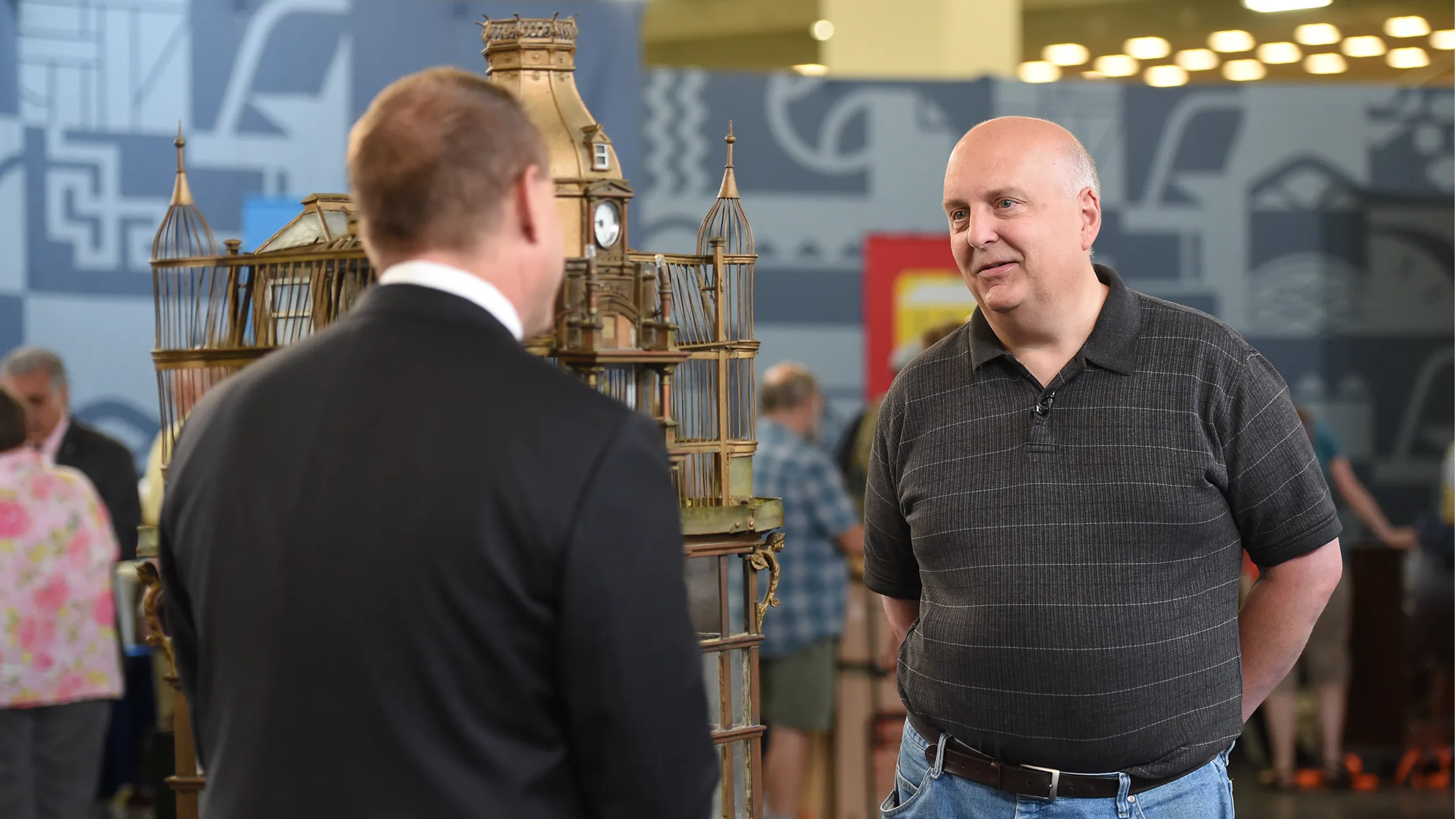GUEST: It's a Mid-Century wood bowl that we think was Mid-Century. We came across it in a local auction, my dad and I kind of stumbled to it, it was in a cardboard box, and we pulled it out and started looking at the markings, and we thought, "Boy, this could be something." So we said, "You know what, let's throw $200 on it." We kind of debated about it, went and bought some other items. Then we thought more and more, "You know what, that name looks recognizable. It clearly is a skilled craftsman that did this." We knew it had to be something. So I think we settled on $557. Come to find out we were the highest winner by about $300.
APPRAISER: So when did you acquire this piece?
GUEST: Just a couple of years ago, actually.
APPRAISER: Well, what you bought was a wonderful piece of Ed Moulthrop turned wood. I've seen a lot of turned wood in my life, and this is by far the largest piece I've ever seen. It is absolutely monumental. Ed Moulthrop had an interesting career. He started off as an architect, he went to Princeton. He moved down to Georgia, where he taught architecture. In the '70s, he began to make turned bowls almost exclusively. That's what he did for a living. He has several family members that do it as well, but he really kind of pioneered this, and this look is so fantastic, and it's so classic Ed Moulthrop. I'm always curious as to how they got it this big.
GUEST: That was always my question. I mean when we see this thing, obviously one piece of wood. I've dabbled with turning bowls myself when I was younger, and I mean they had to have custom tooling or something to go after this, I would think.
APPRAISER: He had a massive personal lathe that he could do this with. Then all of his tools had very long handles so he could get to the bottom of this. All this shine on here is a glycol that he put on it, which would soak into the wood and help preserve it. One problem we have with this piece, however, is that we have several humidity cracks. The humidity here is very low. The lack of humidity sucks the moisture out and we get cracks. Right. But this piece, other than these cracks, is really fantastic. It's also signed on the bottom. And if you don't mind, can we turn it up?
GUEST: Sure, absolutely.
APPRAISER: And it's a gum wood, which is common. Edward Moulthrop loved to use wood that was kind of secondary to a lot of usages, but that was beautiful. Wood that had... been struck by lightning, or wood that had big knots on it, or wood that had been damaged and had repaired itself, and that's where all these beautiful lines come. And the lines and just the art in this piece is just fantastic. A lot of Modern is about organic design, and this piece is just absolutely perfect for organic design. And it's huge!
GUEST: It's huge.
APPRAISER: So as far as the value, do you have any idea what you think a value might be?
GUEST: We tried to put our pieces together with what you can find online, and it's a little all over the place. As you mentioned that there are family members that carried on his tradition. Is this a genuine from Ed himself, or is this maybe one of somebody else?
APPRAISER: We believe it's genuinely from Edward himself.
GUEST: Okay.
APPRAISER: My guess it was built sometime in the 1980s.
GUEST: You think '80s, okay.
APPRAISER: It could be the 1990s. He passed away in 2003, and as far as a value goes, it's largely dependent on the size. I think at auction, if we didn't have the cracks in it, it'd probably be in the $30,000 to $40,000 range, which is a heck of a lot of money.
GUEST: Yeah.
APPRAISER: With the cracks it becomes a bit more dicey, we're not quite as sure what it'll bring. My guess with the cracks, we could safely say at auction it'd probably bring $15,000 to $20,000.
GUEST: Sure.
APPRAISER: I about swooned, you know. I thought they were going to have to like come over and give me oxygen or something, you know. It's a fantastic piece.
GUEST: Well, thank you very much.











